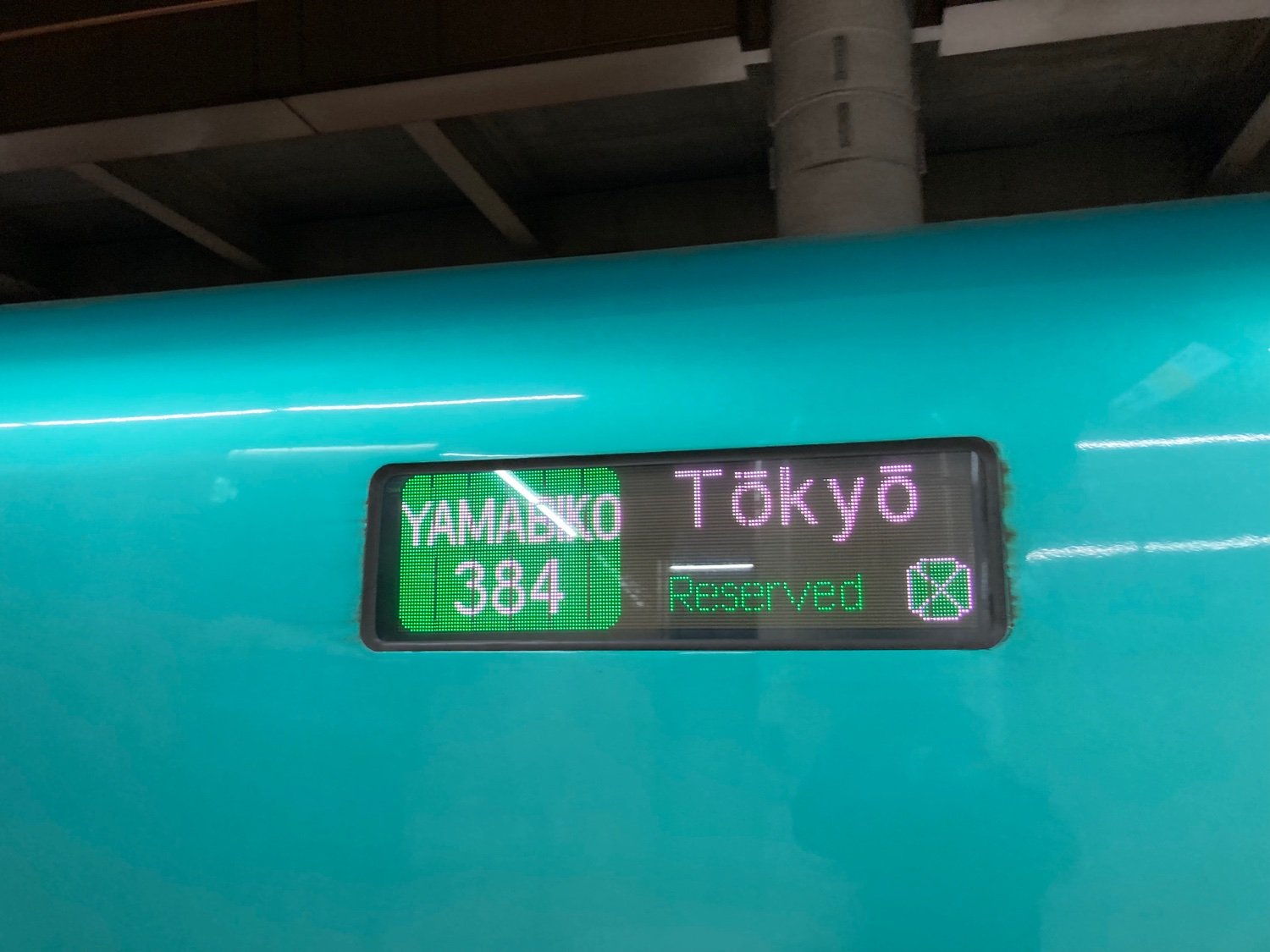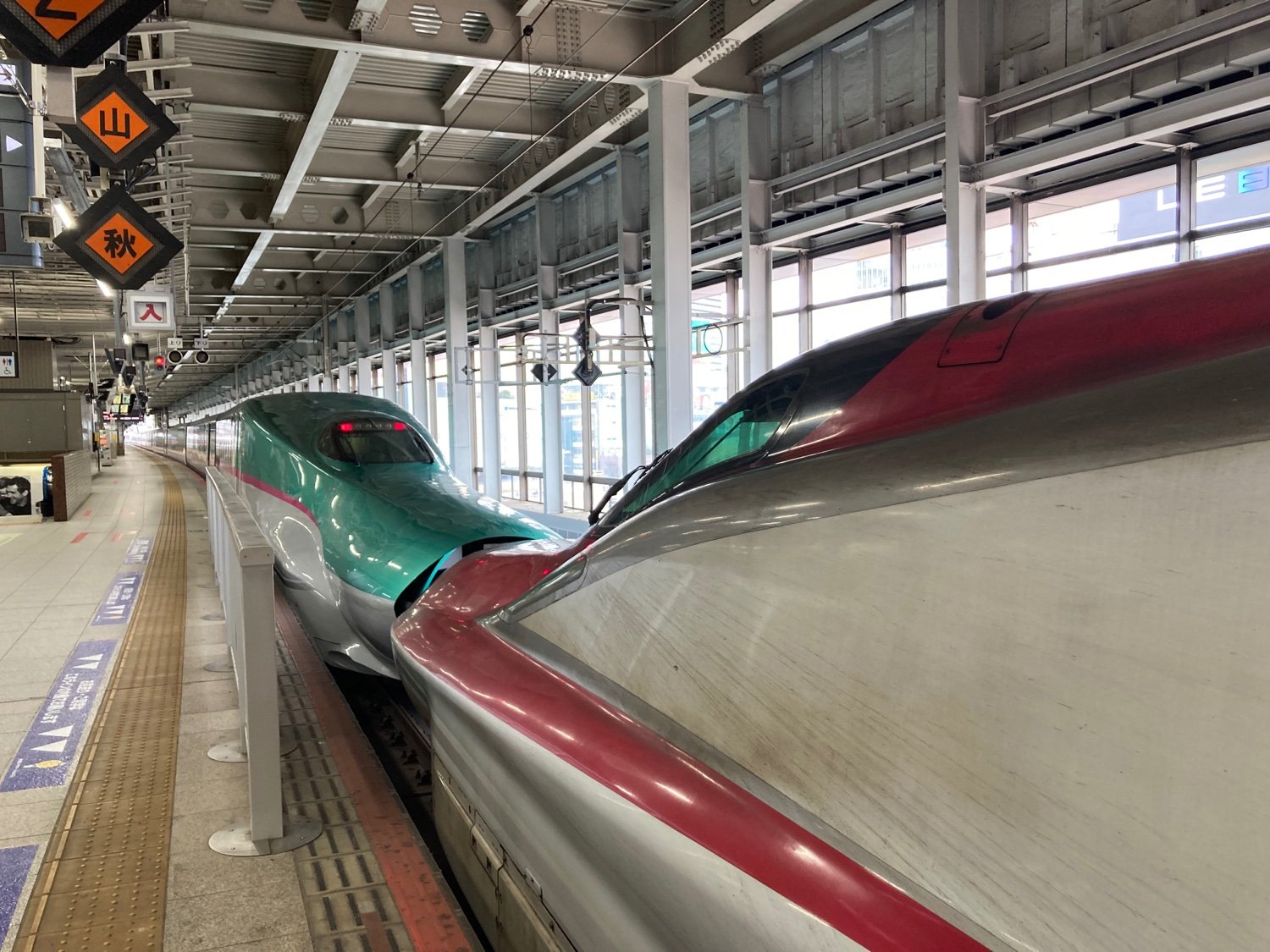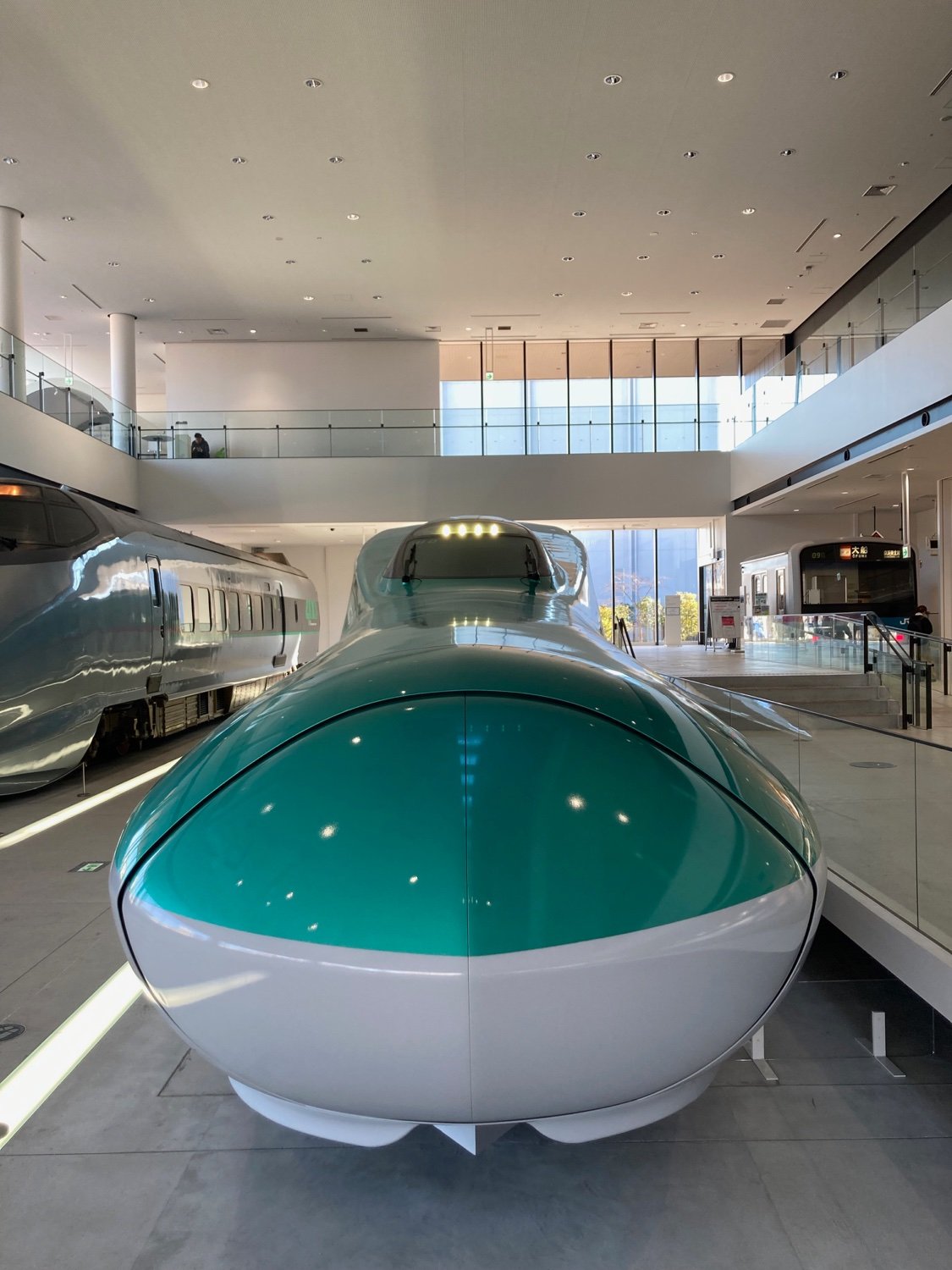Above: An E5 Shinkansen with it’s trademark aquamarine livery on the Yamabiko service at Ueno Station in 2022.
The E5 Shinkansen began life on the Tohoku & Hokkaido Shinkansen lines. It was the first new single-decker Shinkansen series since the E3s entered service in 1997. The Hokkaido Shinkansen uses an altered, nearly-identical model called the H5. H5s are designed specifically for cold weather operation and were originally incompatible with E5 sets. As of 2016, both versions can interoperate. The E5 train sets run four different services (Hayabusa, Hayate, Yamabiko, & Nasuno) in east & northern Japan, but the model, in general, is nicknamed Hayabusa (The Japanese word for the peregrine falcon) after the original service between Tokyo Station and Shin-Aomori Station.
The digital display on the outside of the train denoting the service and number. This E5 is on the Yamabiko service, bound for Tokyo Station.

The livery of the E5 series is called “Tokiwa” green & “Hiun” white. The E5 sets have a “Hayate” pink stripe separating the green and white, while the H5 sets have a “Saika” purple stripe. Each E5 & H5 train set has an abstract logo on the side of the body designed to resemble a flower. These designs and colors are meant to evoke an image of the colorful fields of flowers found in northern Japan.
The E5 Shinkansen are often seen coupled to the E6 “Komachi” Shinkansen (red) while running between Kanto and Tohoku. An E5 & E6 set at Sendai Station in 2023.

The E5 Shinkansen won the 2012 Blue Ribbon Award, an award issued by Japan Railfan Club to train models released the previous year that are considered to be the most outstanding. It was the fourth Shinkansen model to win the award.
A mockup conductor cab car of the E5 series at the National Railway Museum in Omiya in 2024.

All pictures taken by me in 2022, 2023, & 2024. Part of my Rolling Stock series of posts.


I enjoyed the Omiya Train Museum too, here’s my pic of the same E5 section, from above (with the experimental 400 series behind it):